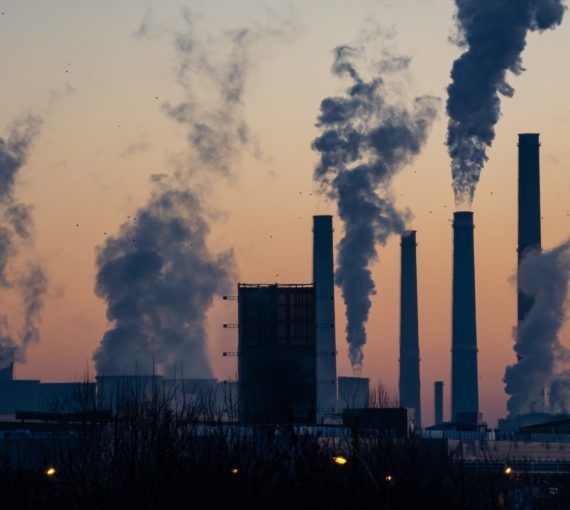
Economists say carbon pricing is the most effective way to reduce climate-altering greenhouse gas emissions. (Photo: Alexander Tsang via Unsplash)
Faced with rising rent payments, housing prices, interest rates and fuel costs, many people have little time for more complex but still pressing issues like climate change. Others seize on the affordability crisis to attack common sense climate measures, such as carbon pricing.
Economists say carbon pricing is the most effective way to reduce climate-altering greenhouse gas emissions. It can also help with affordability. Putting a price on the pollution that causes climate change (and other costly problems) encourages everyone to reduce emissions, by cutting back on damaging activities or shifting to cleaner, less expensive technologies — or both.
Without these charges, the public pays the price for everything from pollution-related health-care costs to the increasingly expensive impacts of a warming planet, including droughts, floods, wildfires, sea level rise and more.
Corporations such as oil companies, especially, shouldn’t be allowed to use air, water and land as free dumping zones.
Corporations such as oil companies, especially, shouldn’t be allowed to use air, water and land as free dumping zones. That’s why other measures are also needed, including a firm limit, or cap, on oil and gas industry emissions, regulations to quickly reduce methane pollution and windfall taxes on excessive profits.
Of course, carbon pricing also applies to fossil fuel use in homes, buildings and private vehicles. But with government incentives it can facilitate increased energy efficiency with simple means such as installing better insulation, sealing air leaks and using energy-efficient appliances — all of which result in savings. It’s also driving a shift from gas-powered to electric vehicles.
One way to reduce emissions and save on energy costs is to switch out oil- and gas-powered heating and cooling systems for efficient heat pumps, which can also cool indoor spaces and are effective even in cold climates. Finland, Norway and Sweden have the highest per capita heat pump use! Along with a three-year pause on the carbon levy on home heating oil, the federal government is offering incentives to install heat pumps. It should make those and retrofits free for lower-income households, and expand affordable, low-carbon, resilient housing.
“Fossilflation” — rising prices and volatile markets related to fossil fuel dependency — is a much larger driver of the affordability crisis.
Regardless of whether or not the federal pause is warranted, Big Oil and its supporters have seized on carbon pricing to instil fear over home heating and transportation affordability. Some politicians are calling for it to be scrapped altogether, which serves industry’s interests and shows a lack of interest in reducing emissions. “Fossilflation” — rising prices and volatile markets related to fossil fuel dependency — is a much larger driver of the affordability crisis.
Carbon pricing plans such as Canada’s are “revenue-neutral,” with money returned to the provinces where its collected. Ninety per cent of revenues are returned to households through rebate programs, with the remaining 10 per cent put into programs to help institutions such as schools, businesses and municipalities reduce their emissions. Most middle- and low-income households receive more back in rebates than they pay for carbon pricing, often misleadingly called “carbon taxes.”
A report from Canada’s Parliamentary Budget Officer shows that even as the levy increases to $170 a tonne in 2030, rebates grow accordingly, and 80 per cent of families come out better off.
Industry profiteering and volatile fossil fuel markets affect affordability far more than carbon pricing. Home heating oil prices in much of Canada have risen by 50 to 80 per cent over the past four years!
We’re in a climate emergency. Getting rid of necessary measures is the opposite of what’s needed.
Climate disruption itself is increasing the cost of living, as it affects everything from agriculture to infrastructure. The Canadian Climate Institute estimates that climate change and responding to more extreme and frequent weather events costs about $720 per person a year, expected to rise to between $1,900 and $2,300 annually by 2050.
Carbon prices also introduce greater market stability, and the renewable energy they facilitate costs far less than fossil fuel power, including fossil gas, often misleadingly referred to as “natural gas.” Studies show that carbon pricing works. B.C.’s carbon levy, introduced in 2008, reduced emissions by five to 15 per cent over its first seven years without affecting economic growth. And the levy was relatively low in its initial years.
Canada should stay the course on carbon pricing so this important tool can keep doing good. Those calling for its elimination are playing on the public’s economic fears to support the deadly, dying fossil fuel industry. We’re in a climate emergency. Getting rid of necessary measures is the opposite of what’s needed.


